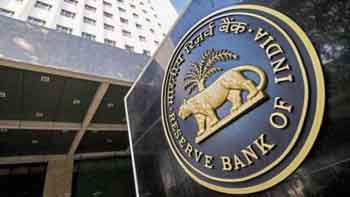Brief – : Discover the implications of RBI’s recent decision to tighten regulations on unsecured loans, affecting both banks and NBFCs. Learn about the revised risk weights, impact on credit cards, and the changing landscape of consumer loans.
RBI Tightens Rules for Banks and Non-Banking Financial Companies (NBFCs) on Unsecured Loans
In a significant move impacting banks and non-banking financial companies (NBFCs), the Reserve Bank of India (RBI) has implemented stringent rules regarding the valuation and exposure of top-up loans. The apex bank has increased the risk weight for consumer loans, also known as risk weights, from 100% to 125%, adding to the challenges for institutions dealing with unsecured categories of loans.
[ez-toc]
Strengthening Regulations on Unsecured Consumer and Personal Loans
The RBI’s recent decision will have immediate implications for both new and existing loans, covering a broad spectrum of unsecured loans, including vehicle loans. This move aims to enhance the assessment and exposure objectives for unsecured categories of loans, emphasizing the inclusion of vehicle loans.
Impact on Credit Cards and Risk Weights
The risk weights for credit cards have been raised to 125% for banks and 100% for NBFCs. This adjustment represents an increase from the previous levels of 150% and 125%, respectively. The elevation in high-risk burden signifies that banks need to allocate more funds in reserves for unsecured personal loans, reducing their lending capacity. The hike in risk weights for NBFCs implies that they will now have to provision more capital to extend consumer loans, potentially leading to higher interest rates.
Implications for the Loan Landscape
With the new regulations in effect, both banks and NBFCs will face increased risk provisioning, making the acquisition of consumer loans and holding credit cards more costly. The rules, effective immediately, will be applicable to both existing and future loans. However, certain categories such as housing, education, vehicle loans, and gold loans are exempted from the revised risk weights.
Focus on Mitigating Risks
The move by the RBI underscores the central bank’s focus on mitigating risks associated with unsecured personal and consumer loans. The adjustment in risk weights aims to ensure that financial institutions maintain a robust buffer against potential losses. However, this could result in a reduction in the ability of banks and NBFCs to extend consumer loans, potentially leading to higher interest rates and reduced lending capacity.
Surge in Personal Loans
Until September this year, banks have seen a significant surge in personal loans, totaling ₹48.26 lakh crores. This represents a 30% increase over the past year, highlighting the growing reliance on unsecured loans. In contrast, general credit growth during the same period has only risen by 12-14%. The rapid growth in personal loans raises concerns about the increasing risk of defaults.
RBI’s Call for Review
Apart from the changes in risk weights, the RBI has urged banks to review regional risk limits for consumer loans and implement approved limits. This directive is part of the RBI’s broader strategy to ensure prudent lending practices and safeguard financial institutions from excessive exposure to unsecured loans.
In conclusion, the RBI’s recent measures aim to strengthen the regulatory framework surrounding unsecured loans, especially in the consumer and personal loan segments. While these steps enhance the resilience of financial institutions, they also pose challenges in terms of increased provisioning and potential impact on interest rates. The regulatory landscape is evolving, and financial institutions must adapt to these changes to maintain a healthy and sustainable lending environment.













